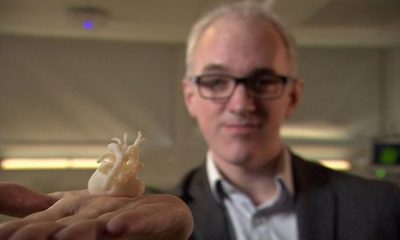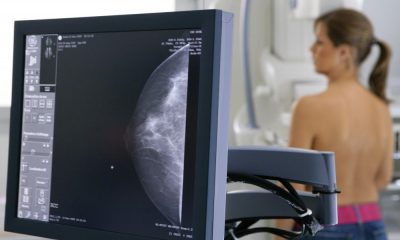Health
Learn First-Aid Today! Information to Help You During an Medical Emergency (1)

Welcome to Our First-Aid Article (how to)
From cuts to burns to fractures and nosebleeds many accidents take place everyday. Understanding First-Aid will not only better equip you in case of an emergency but could perhaps mean the difference between life and death of a patient. In this article we’ll examine basic First-Aid procedures.
Good Samaritan Law
Any persons who assist those who are injured, ill or in peril are protected by the Good Samaritan Law. As long as they’re acting voluntary, without expectation of reimbursement or compensation while performing such aid on site-they’ll have legal protection.
Things you’ll need in a Medical kit:
1. Gauze pads (at least 4 x 4 inches).
2. Two large gauze pads (at least 8 x 10 inches).
3. Box adhesive bandages (band-aids).
4. One package gauze roller bandage at least 2 inches wide.
5. Two triangular bandages.
6. Wound cleaning agent such as sealed moistened towelettes.
7. Scissors.
8. At least one blanket.
9. Tweezers.
12. Resuscitation equipment such as resuscitation bag, airway, or pocket mask.
13. Two elastic wraps.
14. Splint.
15. Directions for requesting emergency assistance.
Punctured Wounds may appear less severe than cuts or scrapes, however, punctured wounds can be very serious. Punctured wounds can become infected easily and it’s very dangerous if the wound becomes infected. If the wound has excessive bleeding make sure to call 911.
Remember, if the patient falls unconscious or is nonresponsive without a pulse make sure to call 911 and perform CPR.
Make sure, as with Cuts & Scrapes, to stop the bleeding. Apply a cloth or gauze.
After you’ve stopped the bleeding make sure to clean the wound. You can use soapy water but avoid getting soap in the wound itself. Clean the wound thoroughly with water and if there’s any debris make sure to clean it out with sterilized tweezers.
You can apply an over-the-counter ointment such as: Neosporin.
If the patient is in pain make sure to give a pain reliever such as: Aleve.
Make sure to cover the wound with a gauze to keep the wound clean and change when necessary.
Make sure to see a doctor if there’s an infection or swelling, the patient was bitten by an animal, if the wound was exposed to any saliva or soil or if the wound is 1/4 deep. The patient might need a tetanus or booster shot.
Amputations. There are several steps to follow when dealing with amputated body parts. These steps are:
Always practice universal precautions. Call 911 immediately.
If the patient isn’t breathing perform CPR.
Control the amount of blood loss on the stump. Apply direct pressure. Make sure to raise the injured area. If there will be a delay for medical attention use a tourniquet or tight bandage. If possible clean the amputated part and make sure to keep it with the patient. Wrap the part in a cloth and put it in a plastic sealed bag inside of ice cold water. If the amputated part is below the heart make sure to raise the legs 12 inches above the heart. Watch for any signs of shock.
Cuts & Scrapes. There are several basic steps to follow when aiding Cuts & Scrapes.
Make sure to stop the bleeding. Apply pressure to the cut or scrape for about 30 minutes depending on how deep the cut or scrape is. Make sure to apply pressure until the bleeding stops. If the wound continues to bleed after applying thorough pressure seek medical attention at your nearest clinic or hospital.
Next, make sure to clean the wound. Thoroughly cleaning the wound will protect the patient of infection. You can use soapy water to clean around the wound but make sure not to apply soap to the wound itself. If there’s any debris or anything of that nature make sure to use a sterilized tool (tweezers) when clearing it.
Next, apply an ointment upon the wound. You can use any over-the-counter ointments such as: Neosporin. This step is just as important as any other step and can help the healing process by disinfecting the wound.
Wrapping the wound in proper bandages is not only helpful, but key to keeping the wound disinfected. Allowing the wound air when redressing your bandages will help speed the healing process. Make sure to change the bandage once it becomes soaked by any fluids. Also, change them daily.
If any wounds are more than 1/4 inche deep make sure to seek medical attention for stitches. You can apply tape to seal the wound until help is available.
Keeping the wound clean is very important. Make sure the patient gets a tetanus shot or a tetanus booster shot.
Cardiac Arrest
Cardiopulmonary Arrest (Cardiac Arrest) is the ineffective contractions of the heart causing a cessation of blood circulation throughout the body. The cessation of circulated blood will result in the patient falling unconscious due to a lack of oxygen. If Cardiac Arrest patients are left untreated brain damage, and even death, is very likely. Immediate response is crucial in saving the life of a Cardiac Arrest patient. CPR should be performed immediately.
Heart Attack
A Heart Attack is when the heart isn’t receiving oxygenated blood. When a patient isn’t receiving oxygenated blood the heart begins to die. The patient might undergo pain in the center of the chest, sweating, nausea, dizziness and faintness. Also, pain throughout the body in areas such as: neck, shoulders, jaw, teeth and arms.
Treatment: check universal precautions, call 911 immediately or rush the patient to the nearest hospital, have the patient chew aspirin (unless allergic or told otherwise). If the patient is unconscious or unresponsive perform CPR.
Respiratory Arrest
Respiratory Arrest is the cessation of oxygen throughout the body. Failure of the lungs to deliver oxygen can result in death if untreated. A lack of oxygen to the brain will result in a loss of consciousness and immediate treatment is important for the chances of survival. Artificial ventilation treatment is the necessary act for saving respiratory arrest patients. Make sure to call 911 immediately and then, perform CPR.
Fractures
A Fracture can be very serious. It’s important to understand Fractures and understand what to do according to the severity of the injury.
If there are any signs of a concussion, if the bone is broken at the neck, head or back, if the joint is deformed, if there’s heavy bleeding, or any abnormalities of the broken bone such as: a piercing of the skin or if the bone is irregularly fixed, call 911 immediately.
If the patient is unconscious, has no pulse or is non-responsive call 911 and begin CPR immediately.
Make sure to stop the bleeding by applying pressure to the Fracture and wrapping it if necessary.
Apply a splint to the Fractured area. If the patient isn’t moving do not try and move the patient yourself.
If needed, apply a cold cloth or ice to the fracture.
Remember: if the patient appears to be light-headed or on the verge of fainting lift the legs slightly higher than the victim’s heart to raise the blood pressure.
Bruises are broken blood vessels that leak under the skin-dark-colored spots caused by a blow, fall, etc…
Treatment: Make sure to elevate the injured area which will alleviate the pain. Also, apply an ice-pack or cold cloth.
If needed, have the patient take a pain-reliever such as: Tylenol to reduce the pain and swelling.
If the Bruise appeared on the head you may consider taking the victim to an emergency room to check for a concussion. A Bruise usually lasts for about 2 weeks, but if there are bruises for no apparent reason, and/or the bruise lasts longer than 2 weeks, than consider taking the patient to a hospital or calling a doctor.
Sprains and Strains
Sprains and Strains differ in where the injury takes place on the body.
Sprains occur in any ligaments, such as: ankles, wrists, etc…
Strains occur when a muscle/tendon is torn. Strains can occur in the back (hamstring) or thigh, etc…
Treatment: rest the Sprained/Strained area in a sling, crutch or flint. Make sure to place ice over the area to prevent swelling. Make sure to apply a bandage to the joint or limb or use a brace, if possible. Make sure to raise the patient’s Sprained/Strained part 12 inches above the heart.
Burns vary on the degree of which layer the burn reaches. Remember, their are 3 categories-1st-degree, 2nd-degree and 3rd-degree.
1st-degree Burns have persistent pain, are red, and usually are accompanied by swelling.
Treatment: the key is to keep the burn cooled. There are many ways to do this, such as: soaking the burn in a cool bath or wrapping the burn with a cooled cloth. The next step is to treat the burn with an ointment, such as: Aloe Vera or some other over-the-counter burning ointment. Lastly, you can use gauze to wrap the burn so it doesn’t get infected. Remember, you should change the gauze at least, once a day. If there’s a considerable amount of pain, have the patient take a pain-reliever.
2nd-degree Burns refer to the burning breaching the 1st layer of skin and reaching the 2nd. Usually there’ll be blisters accompanied by severe pain and swelling.
Treatment: if the burn is larger than 3 inches, seek medical attention at your nearest hospital. If the burn is smaller treat it as you would a 1st-degree burn. The key for treating a 2nd-degree burn is to wrap the burn daily in gauze, making sure of cleanliness. Use Neosporin and others medicines and make sure the patient doesn’t scratch at it. Having the patient take an over-the-counter pain reliever will most likely be necessary. Pain relievers such as: Aleve or Tylenol. If the burn does not heal or if the burn looks like it’s infected, make sure the patient seeks medical attention.
3rd-degree Burns are the most serious of all. These burns will be charred and can be deeper than the 3rd layer of the skin. Medical attention is very serious and you should call 911 immediately. 3rd-degree burn patients usually won’t feel much pain due to the charring of nerve-endings.
Treatment: call 911 immediately. If the patient isn’t breathing perform CPR. Make sure you do not remove the patient’s clothes but make sure all materials are put out. If possible, raise the burned parts above the heart to increase the patients blood pressure as well as to relieve pain and loss of blood. If possible, cover the burns with a moist cloth and either wait for medical assistance or rush the patient to the nearest hospital.
Electroshocks
Electroshocks can cause no harm, mild harm or severe harm-depending on many factors. If electroshocks are sustained over many seconds or even longer, severe burning may occur. You may need to call 911 but check for these signs before calling: has the patient undergone cardiac arrest, burns, and/or seizures, is the victim unconscious, or does the patient have numbness or tingling sensations, are there muscle contractions, respiratory problems or heart problems?
Make sure the patient is free of any electrical currents before touching the patient.
Make sure to turn-off any nearby electrical boxes. If there’s still a current and you’re unable to turn it off use non-conductive materials to either move the source from the patient or the patient away from the source.
If the patient is non-responsive, begin CPR immediately.
The patient, if conscious, may still be in danger of going into shock. To prevent this:
Make sure to raise the patient’s legs above his/her heart which will raise the patient’s blood-pressure.
Bites & Stings
Many Bites and Stings have mild reactions; however, some bites and stings can have serious consequences, if untreated. Most stings aren’t fatal but few insects do carry fatal diseases, such as: West Nile virus or Lyme disease. If severe reactions (anaphylaxis) are present, these are some symptoms you should look for: lowered blood pressure, abdominal pain, difficulty breathing, swelling, redness, vomiting and nausea.
Mild reactions: use universal precautions, remove the stinger, apply a cold pack, give the patient a pain reliever, and use ointment, such as: Benadryl, or any antihistamine, if necessary. Mild allergic reactions are: diarrhea, swelling, cramps, nausea and vomiting.
Severe reactions include: difficulty breathing, swelling (lips, throat, etc… ), nausea, vomiting, hives, rapid heart beat and faintness and dizziness.
Treatment: administer an auto injection into the patient (in butt or thigh and massage injection for faster response). Perform CPR, if needed. Have the patient lay on his/her side to prevent choking, if necessary
Drug overdose
A Drug Overdose is a dose larger than the recommended assumption. There are many reactions that can occur, such as: sleepiness or unconsciousness, excitement with a rapid heart beat, hallucinations, impaired judgment and decision-making skills.
There are many different symptoms associated with drug overdoses. Symptoms: death, unconsciousness, convulsions, delusional behavior, abnormal pupil size, difficulty breathing, nausea, non-reactive pupils, vomiting, sweating, numbness and violent aggressive behavior.
Treatment: Check universal precautions. Check if there’s a pulse, if not, perform CPR. Keep the patient calm and reassured of his/her safety. Check for any shock symptoms. For seizures and convulsions apply first-aid. Monitor vital signs. Make sure to document any and all drugs taken and keep the container and/or label.
Poisoning
If a Poisoning is suspected make sure to call the National Capital Poison Center at: 1-800-222-1222.
Signs of Poisoning: vomiting, difficulty breathing, sleepiness, confusion, burns (redness) around the mouth, chemical odors out from the mouth and burns on clothing or skin.
Treatment: make sure to take the patient outside for fresh air. Have the patient flush out his/her mouth. Make sure to read the label of the chemicals that were induced and read the instructions for poisoning. Flush the patient’s eyes and/or have the skin cleansed. If the patient isn’t breathing perform CPR. If the patient needs medical attention make sure to give the container, label and/or pills to the Emergency Medical Services (EMS) personnel.
Nosebleeds
Nosebleeds are very common. Whether it’s a hot day or a minor fall nosebleeds are not a serious medical problem.
Treatment: If the nosebleed results from a more serious injury such as: a broken nose or a head injury, make sure to call 911. If the patient falls unconscious or is non-responsive without a pulse, perform CPR.
If the nosebleed occurs to be a serious injury make sure to apply pressure to the nose for roughly ten minutes-make sure to have the patient breathe through his/her mouth. After applying pressure, make sure to clear the patient’s nose cavity. If the patient is congested, thoroughly wash the cavity or use a decongestant after the patient has tried blowing his/her nose.
If the patient undergoes many nosebleeds it can be a more serious injury than it appears so have the patient call his/her doctor to set-up and appointment.
Hemorrhages
A Hemorrhage is a loss of blood. There are 4 classes of Hemorrhages.
A loss of 15% blood volume. No change in vital signs.
A loss of 15-30% blood volume. Blood transfusion isn’t usually necessary, but may need Saline solution (salt water). Rapid heart beat.
A loss of 30-40% blood volume. Blood transfusions are necessary. Drop in blood pressure with rapid heart beat.
A loss of 40% blood volume. Resuscitation is necessary for death prevention.
Treatment: check for universal precautions. Perform CPR, if necessary. Wrap hemorrhage, if possible. Call 911 or bring the patient to the nearest hospital.
Choking
Choking is caused by an object blocking the throat or windpipe. Adults often choke by a large piece of food but children often swallow small toys or other objects.
Remember, the universal sign for choking is mimicking choking yourself. Make sure to ask the patient if he/she is choking because, many times, the person is merely coughing. If the patient is unconscious make sure to call 911.
Infants 12 months or younger: rest the patient on your forearm, while also resting your forearm, on your thigh. Perform 5 thumps with the heel of your hand upon the infants back. If the patient is still choking turn the infant over, face-up, and with 2 fingers upon the breastplate perform 5 chest compressions. Repeat the process until the object is lodged.
Children and adults: when performing the Heimlich maneuver make sure to stand behind the person. Lean the person slightly forward and wrap your arms around his/her waist. Next, press hard with a closed fist into the abdomen than grab your fist with your other hand. Perform 5 quick thrusts. If the object still hasn’t cleared the patient’s throat/windpipe, repeat the cycle.
Unconscious person: when performing the Heimlich maneuver on an unconscious person lay the patient on his/her back. Make sure to clear the patient’s airway, if needed, finger swipe the patient’s mouth to pick out any foreign objects. If you can’t see or can’t take the object out of the patient’s mouth, make sure to perform CPR. Chest compressions will most likely clear the patient’s airway.
If you’re still unable to clear the patient’s airway and/or if the patient still isn’t showing signs of life, make sure to call 911 and continue performing chest compressions.
You may like

Gal Gadot Gives Birth to Third Child

Ariana Grande Is Giving Away One Million Dollars for a Good Cause

Potato Nests with Peas, Ham and Cream Cheese

So, you can get yeast infection from biting your nails













